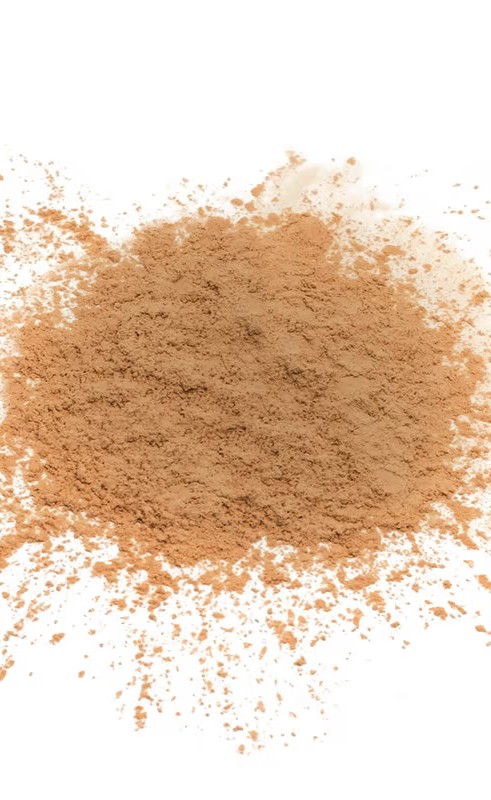What’s Dispersant NNO?
Dispersant NNO, or Sodium Naphthalene Sulfonate Formaldehyde Condensate if you want the full mouthful, is a chemical that’s like the ultimate team player in industries like rubber, leather, and even concrete. It’s a powdery stuff, usually light brown or yellowish, that dissolves in water and works like a charm to mix things that don’t naturally get along. In the rubber world, it’s used as an additive to make sure all the ingredients in a rubber mix—think fillers like carbon black or silica—spread out nice and even. Without it, you’d end up with lumpy rubber that’s weak in some spots and strong in others, kind of like a poorly mixed smoothie with chunks of fruit in one sip and none in the next.
Why Do We Need Additives in Rubber?
Rubber isn’t just one thing—it’s a recipe with a bunch of ingredients tossed together to make it tough, stretchy, or grippy, depending on what you’re making, like tires, shoe soles, or hoses. Here’s what typically goes into the mix:
- Rubber itself: The main stuff, either natural (from tree sap) or synthetic (made in a factory, like styrene-butadiene rubber or SBR).
- Fillers: Things like carbon black (makes tires black and strong), silica (great for grip), or calcium carbonate (cheaper filler to save money).
- Sulfur: Added during vulcanization to harden the rubber so it doesn’t melt or stay gooey.
- Other goodies: Stuff like zinc oxide (speeds up hardening), anti-aging chemicals (to keep rubber from cracking in the sun), or pigments (for colored rubber).
The tricky part? These ingredients, especially fillers, can be stubborn. They like to clump together, like kids huddling in groups at a school dance. If they don’t spread out evenly, your rubber might end up with weak spots, uneven wear, or weird texture—bad news for something like a car tire that needs to be reliable. That’s where Dispersant NNO comes in, acting like a friendly teacher who gets everyone to mingle and spread out across the dance floor.
How Dispersant NNO Helps as a Rubber Additive
Dispersant NNO’s main job is to make sure all those fillers and other ingredients mix evenly into the rubber. Here’s how it pulls it off:
- Breaking Up Filler Clumps:
- Fillers like carbon black (used in tires for strength) or silica (for better grip in wet conditions) are powdery and love sticking together in clumps. If they stay clumped, you get rubber that’s strong in some areas and weak in others.
- Dispersant NNO works like a magic wand, surrounding those filler particles and pushing them apart so they spread out evenly in the rubber. This makes the rubber stronger, more durable, and consistent all the way through.
- Helping Vulcanization:
- Vulcanization is when you heat rubber with sulfur to make it tough and elastic, like turning dough into bread. If the sulfur or other chemicals (like zinc oxide) aren’t spread evenly, some parts of the rubber might get too hard and brittle, while others stay soft and squishy.
- Dispersant NNO makes sure these chemicals are mixed in just right, so the rubber hardens the same way everywhere. This is super important for things like belts or seals that need to hold up under pressure.
- Making Mixing Easier:
- Mixing rubber is a big job, done in huge machines that knead everything together like a giant bread mixer. Clumpy fillers or thick, sticky rubber can make this process slow and hard, using up more energy and wearing out the machines.
- Dispersant NNO makes the rubber mix smoother and less sticky, so it’s easier to blend, shape, or squeeze into molds. This saves time, energy, and keeps the machines happy.
- Keeping Things Stable:
- Sometimes, during mixing or even when the rubber compound sits around before shaping, the ingredients can start to settle or separate, like oil and water in a salad dressing. Dispersant NNO keeps everything blended, so every batch of rubber comes out the same.
How Much Dispersant NNO Do You Use?
You don’t need a ton of this stuff to make a big difference. Usually, you add 0.5–2% of the weight of the fillers in the rubber mix. So, if you’ve got 100 pounds of carbon black or silica, you’d toss in about 0.5–2 pounds of Dispersant NNO. It’s often added as a powder or mixed with water to make a 10% solution, depending on what the factory’s setup is like. The exact amount depends on:
- The type of rubber (natural rubber, SBR, nitrile rubber, etc.).
- The kind of fillers (carbon black needs more help than calcium carbonate, for example).
- What you’re making (tires need different properties than rubber gloves).
Use too little, and the fillers might still clump. Use too much, and it could mess with the vulcanization process, making the rubber weaker. It’s like adding salt to a recipe—gotta get it just right.
Where Do You Find Dispersant NNO in Rubber Products?
This additive shows up in all sorts of rubber stuff you see every day:
- Tires: The biggest rubber market. Dispersant NNO makes sure carbon black and silica are spread evenly, so tires grip the road, wear evenly, and last longer. Nobody wants a tire that’s patchy and fails on the highway!
- Hoses and Belts: Think garden hoses, car radiator hoses, or conveyor belts in factories. These need to be strong and flexible, and Dispersant NNO helps keep the fillers and sulfur evenly mixed for reliability.
- Seals and Gaskets: Used in cars, plumbing, or machines, these need to be tough and leak-proof. Even dispersion means no weak spots that could spring a leak.
- Shoe Soles: The rubber in your sneakers or work boots uses fillers for grip and durability. Dispersant NNO ensures the soles wear evenly and feel good underfoot.
- Rubber Mats and Sheets: Like gym flooring or anti-slip mats, these need consistent texture and strength, which Dispersant NNO helps achieve.
- Latex-Based Products: In things like rubber gloves or balloons, it can help during the compounding stage to keep additives mixed, though its emulsifier role (which we talked about before) is more about stabilizing liquid latex.
Why Rubber Makers Love Dispersant NNO
Just like tanneries love it for leather (helping dyes and tanning agents spread evenly, as we discussed), rubber folks can’t get enough of Dispersant NNO for similar reasons. Here’s why it’s a fan favorite:
- Better Rubber: Evenly spread fillers and sulfur mean stronger, tougher, and more reliable rubber. No weak spots, no surprises.
- Easier to Work With: Smoother, less sticky rubber is easier to mix, mold, or shape, saving time and energy in the factory.
- Cheap and Effective: A tiny bit (0.5–2%) does a lot, so it doesn’t break the bank.
- Works with Everything: It’s happy in natural rubber, synthetic rubbers like SBR or nitrile, and with all sorts of fillers, from carbon black to clay.
- Tough Stuff: It holds up in hot, acidic, or alkaline conditions, which is great since rubber-making can be a harsh process.
Tying It to Its Other Roles
You’ve asked about Dispersant NNO in leather tanning and as a rubber emulsifier, so let’s connect the dots. In leather tanning, it helps tanning agents (like chromium or plant-based tannins) and dyes soak into hides evenly, giving you smooth, consistent leather. As a rubber emulsifier, it stabilizes liquid latex during synthetic rubber production, keeping tiny rubber particles suspended in water. As a rubber additive, it’s all about dispersing solid ingredients like fillers and sulfur in the rubber compound during mixing and vulcanization. The common thread? Dispersant NNO is the ultimate “spread things out” helper, whether it’s dyes in leather, latex in rubber, or fillers in a tire. The amounts vary a bit:
- Leather Tanning: 0.5–2% of the hide or solution weight.
- Rubber Emulsifier: Often 2–4% of additives in latex production.
- Rubber Additive: 0.5–2% of filler weight.
Things to Watch Out For
Dispersant NNO is awesome, but it’s not perfect, and rubber makers need to be smart about using it:
- Get the Amount Right: Too little, and you’ll still get clumps. Too much, and it might mess with vulcanization, making the rubber less stretchy or strong. Testing the recipe is a must.
- Environmental Stuff: Like in leather tanning, Dispersant NNO is made from naphthalene, which isn’t super eco-friendly. Factories need to treat their wastewater to keep it out of rivers or soil, especially in places with strict rules like the U.S. or Europe.
- Safety for Workers: It’s not dangerous, but nobody wants to breathe in the powder or get it on their skin all day. Gloves, masks, and good ventilation keep everyone safe.
- Recipe Compatibility: It works great with most rubber mixes, but factories should double-check it plays nice with their specific ingredients to avoid surprises.
- Going Green: Some companies are looking for more natural dispersants as customers push for eco-friendly products. For now, Dispersant NNO is still a go-to because it’s cheap and works so well.
The Big Picture
Dispersant NNO might seem like a small player, but it’s a big deal in the rubber world. Rubber is everywhere—about 70% of it goes into tires alone, but it’s also in your shoes, car parts, and even medical gloves. By making sure fillers and sulfur are spread evenly, Dispersant NNO helps make rubber that’s strong, reliable, and long-lasting. A tire with clumpy carbon black could wear out fast or blow out, and a rubber seal with uneven strength might leak—Dispersant NNO helps avoid those disasters.
Its versatility is wild. In leather tanning, it’s about even tanning and dyeing. In rubber, it’s both an emulsifier (for latex) and an additive (for fillers). In concrete, it makes mixtures flow better. It’s like that one friend who’s good at everything, from cooking to fixing cars. Rubber production is a huge industry, and Dispersant NNO keeps things running smoothly, whether it’s for a tractor tire or a yoga mat.
A Cool Tidbit
Rubber has a crazy history! Back in World War II, when Japan cut off natural rubber supplies, the U.S. went all-in on synthetic rubber. Additives like Dispersant NNO helped make that possible, ensuring factories could churn out tires for tanks and planes. Today, it’s still helping make the rubber in your car or sneakers, keeping the world moving.
Wrapping It Up
Dispersant NNO is like the unsung hero of the rubber industry, making sure fillers like carbon black or silica and chemicals like sulfur mix evenly into the rubber. This leads to tougher, more consistent products, from tires to hoses to shoe soles, all while making manufacturing easier and cheaper. Used in small doses (0.5–2% of fillers), it’s a cost-effective way to boost quality, much like its role in leather tanning or as a rubber emulsifier. Just be careful with wastewater and worker safety, and you’re golden.

